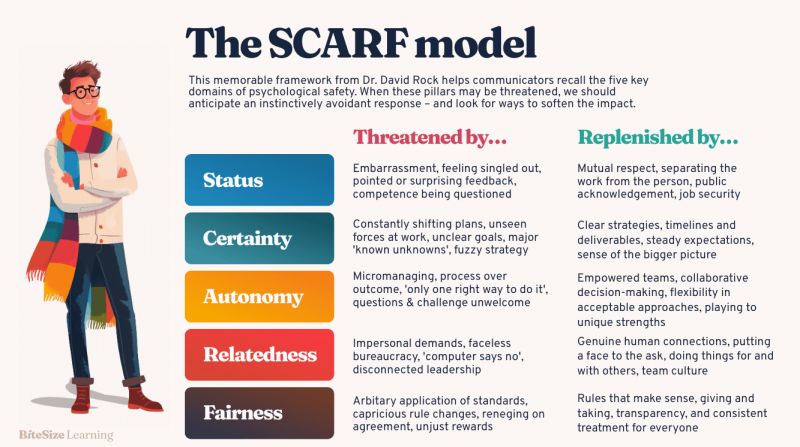Making change feel safer with the SCARF model
10th April 2025
Ever wonder why people say they’re on board with change… but then quietly resist it?
David Rock’s SCARF model helps explain. It identifies five social needs that drive human behaviour – and how easily they can be triggered during change:
Status – change can make people feel less important or less valued
Certainty – the unknowns of change create stress
Autonomy – people feel like things are being done to them, not with them
Relatedness – change can disrupt teams and trusted relationships
Fairness – inconsistent communication or decisions lead to mistrust
The brain experiences threats to these needs in the same way it experiences physical pain. That’s why even small changes can spark such strong emotions.
So how can we respond? By designing change with SCARF in mind:
involve people early and often
give them choices where you can
be honest about what’s known and unknown
create spaces for connection and meaning
treat people like adults
Change is hard. But it doesn’t have to be threatening. When we work with – not against – our human wiring, change becomes something people can embrace more easily.
Which SCARF needs have played out in your change programmes?


